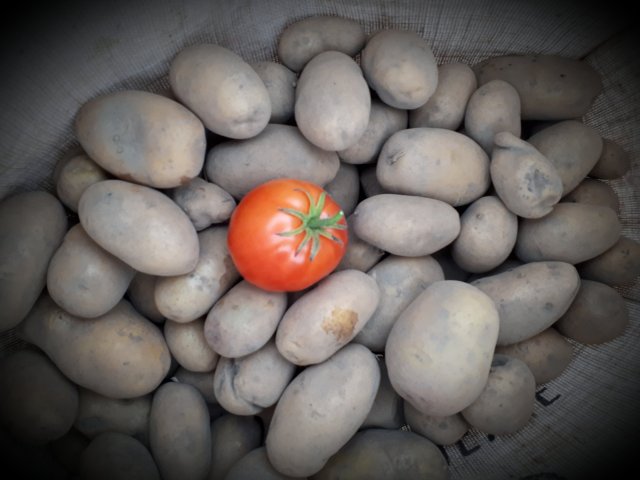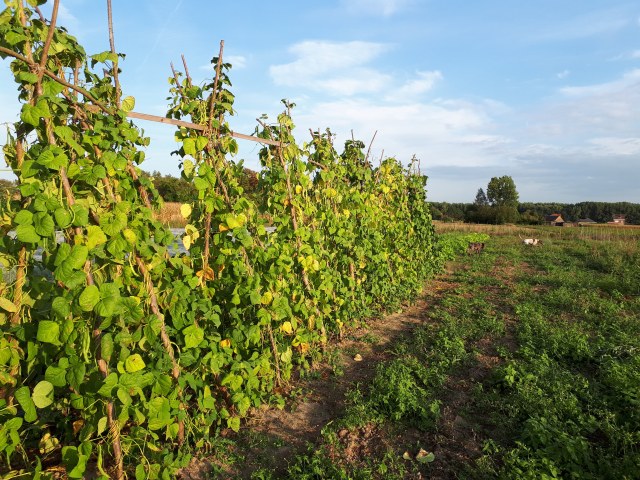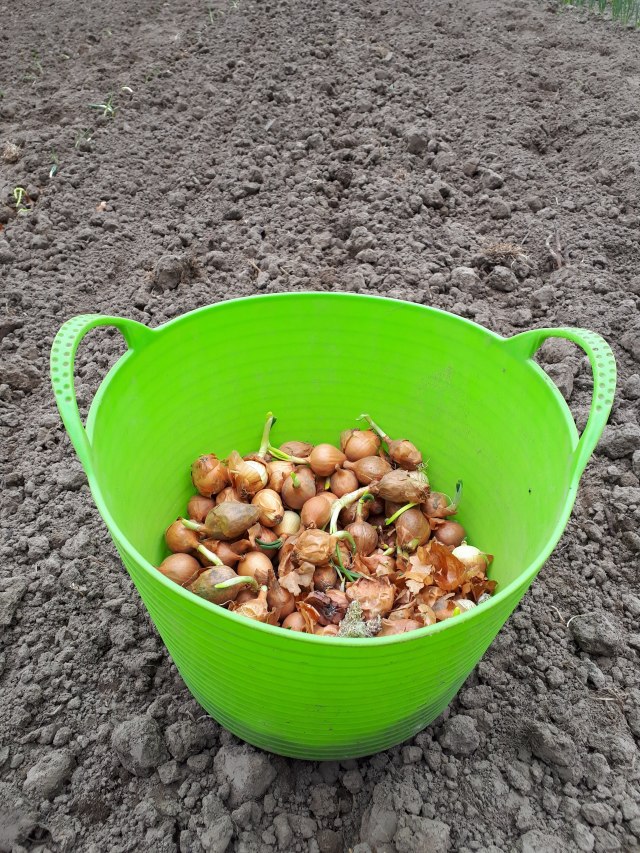On this blog, we mostly talk about how global change is causing species to go ‘on the move’, towards areas where they do not occur naturally. For this post, however, I’d like to turn that perspective around, and talk about another type of species movement, one that is a large part of this global change: the transportation effort needed to bring your food from farm to plate.
Most of all, I want to highlight here an alternative to this #FoodOnTheMove: short-chain farming and community-supported agriculture.

This week, our local community-supported farm distributed this autumn’s potato harvest among its members. I got to take home a nice 17 kg – and one tomato that was looking to perfect to let go.
CSA – or community-supported agriculture – is an agricultural system that aims to connect producer and consumers more closely. Usually, one subscribes to the harvest of one farm or a group of farms. CSA is also on the rise in Western societies, and below I would like to make a strong case why I think that is a good thing.

Anticipating a summer full of beans at our local CSA-farm
Based on my own experience, CSA is beneficial to me – and the world – in a wide range of ways:
- First of all: the environmental gain! A largely plant-based diet is already a big plus for the environment compared to a meat-oriented one, but if those plants are being brought in from far away (or grown in heated greenhouses), there is a substantial environmental cost associated with them. Short-chain farming largely cuts out that transport chain, and the environmental cost associated with it. Moreover, a farm with a diversity of vegetables, as opposed to the kilometers long monocultures seen in industrial farming provides a certain advantage for biodiversity, as does the space gained in third-world countries if you don’t let your food fly in.
- Delicious vegetables, and an un-dreamed variety of them. Vegetables coming fresh from the soil are just that much tastier than their packed and transported shop counterparts. At our farm, there is also so much choice that one is much easier ‘tricked’ into discovering less-known vegetables.

- Following the season: CSA can teach you again how it is not to have all vegetables available in each season. We now follow ‘earth’s heartbeat’ again, instead of having the same common vegetables all year round. The latter also has a big environmental cost associated with it, as the off-season versions of vegetables often need a serious energy investment.
- Get out in the field: often, CSA-farms offer their community the option to help in the field, harvest their own vegetables, or assist with planting and weeding. While this is a great way to get your mind empty, your longs clean and your hands dirty, it also brings back the connection with nature and what you eat. To me, it also thought me how much effort is needed to feed the world as a whole (and me in particular).

Volunteering on the farm to plant onions is a joy. Eating your ‘own’ onions a few months later even more so.
Any downsides to this way of farming? The price perhaps, it is obviously not as cheap as what you would find in the supermarket, and – at least in our case – you pay up front at the beginning of the year. The latter implies that a bad harvest is also carried by the community. The cost for the farmer is another thing: this type of agriculture usually implies a large personal investment from the farmer, not in the least regarding time and energy.
That aside, I do think that CSA can and should play a major role in how we live our lives in the future.
For the locals: I can totally recommend our CSA-farm ‘de Plukheyde‘ in Kampenhout, Belgium.





































































































































































































































































































































































































































































































































































































































































































































































































































































































































































































































































































































































































Wow, great one ✳️
❤️
>